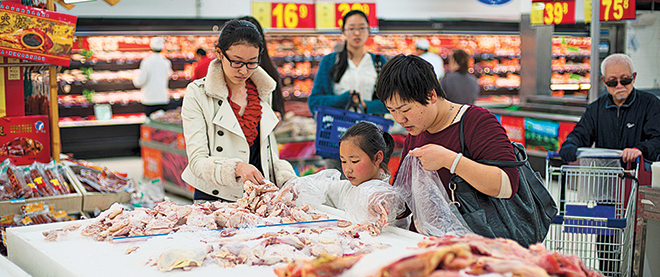Wal-Mart hitting a great wall in China
Before the fox-tainted donkey-meat scandal, Wal-Mart struggled to find its place
Polaris
Share

The news last week that Wal-Mart had to recall packages of donkey meat from its stores in China because they contained bits of fox ricocheted around the world as only a story about fox-tainted donkey meat can. But, for all the attention given to the proclivities of Chinese grocery shoppers, the incident shone a light on a particular problem for the company: For a retailer that’s come to be synonymous with cheap Chinese goods, Wal-Mart is having a hard time finding its identity in the Middle Kingdom itself.
When Wal-Mart entered China in the mid-1990s, it was among the first American retailers to do so. From its early days, it appealed to wealthy shoppers looking for imported goods of higher quality than was available at local Chinese shops. The customers drove BMWs and were willing to pay higher prices for grocery items that wouldn’t put their health at risk. It became a status symbol to shop at the world’s largest retailer.
But, as the store’s footprint grew to the current 404 Wal-Mart outlets, including 10 Sam’s Clubs—with another 110 more stores set to open over the next three years—Wal-Mart has struggled to maintain its upscale consumer base in recent years. For one thing, specialty retailers have popped up to serve the wealthy. At the same time, Wal-Mart’s brand identity as a discount retailer caused it to lose some of its appeal for well-heeled shoppers. “The wealthier consumers didn’t like being confronted with discount signs,” says Shaun Rein, a Shanghai-based retail consultant at China Market Research Group and author of The End of Cheap China. His firm’s data show Wal-Mart is losing market share, even as it ramps up its expansion. “The atmosphere started to get dingy?.?.?.?They didn’t always have great upkeep of the floors, and so wealthier consumers stopped going.”
But luring discount shoppers has posed its own challenges. Rents in many prime retail areas are high, relative to the prices it can charge, and the company has had a difficult time matching deals at mom-and-pop shops. It all comes down to a disconnect in how the Chinese perceive Wal-Mart: To budget shoppers, it’s an expensive Western brand; to the wealthy, it’s a low-rent retailer to be avoided.
The contaminated-donkey-meat scandal has done nothing to help Wal-Mart with either type of shopper. (It’s not the chain’s first food-safety incident there.) Wal-Mart China’s CEO Greg Foran has apologized, and said the company will “increase investment in supplier management.” Foran also said that, within a year, the retailer will add another 500 imported products to its shelves to appease food safety concerns among Chinese shoppers.
In the end, retail consultant Rein suspects the impact of the incident will be small. Compared to local businesses hit by far more severe food violations, Wal-Mart China is still overwhelmingly safe. Donkey meat is not a major consumer item, and Sam’s Clubs continue to attract the upper classes looking for imported foods.
But Wal-Mart is still trying to find its niche. While opening new stores, it is closing dozens of underperforming stores and renovating 165 others. With these improvements, analysts say, Wal-Mart hopes to avoid the same fate it experienced when it had to pull out of Germany and South Korea because it couldn’t meet specific local demands. As long as it avoids more tainted-food scandals.